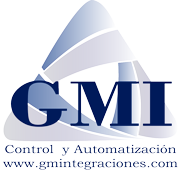29 Jun What is Amortization? How is it Calculated?
Content
The company will use the straight-line method to report the amortization of the software. In the subsequent step, we’ll calculate annual amortization with our 10-year useful life assumption. Under accrual accounting, the “objectivity principle” requires financial reports to contain only factual data that can be verified, with no room for subjective interpretation. Amortization Expense account is debited to record its journal entry.
- To calculate amortization, subtract any residual value (i.e. resale value) from your intangible asset’s basis value (i.e. what you paid for it).
- Prepaid expenses are recorded in the general ledger as a prepaid asset under current assets.
- In addition to loans, you may also spread out the cost of your intangible assets.
- For example, if your annual interest rate is 3%, then your monthly interest rate will be 0.25% (0.03 annual interest rate ÷ 12 months).
- By spreading out payments over a period of time, you can avoid making large lump-sum payments, which may strain your resources.
An agile finance team will be prepared not just for current expenses but for the future too. With amortization’s help, you will know how much you will incur in the future because of your loans and assets. At the same time, any accumulated amortization is added to the credit side of the journal. That means that the same amount is expensed in each period over the asset’s useful life.
Why is amortization in accounting important?
Our experts love this top pick, which features a 0% intro APR for 15 months, an insane cash back rate of up to 5%, and all somehow for no annual fee. Goodwill is the portion of a business’ value not attributable to other assets. Goodwill is a common result of acquisitions where the purchase price is greater than the fair market value of the assets and liabilities. Goodwill, for example, is an intangible asset that should never be amortized.
- Perform pre-consolidation, group-level analysis in real-time with efficient, end-to-end transparency and traceability.
- However, that asset will also bring value to the company, which also needs to be accounted for.
- It is also useful for planning to understand what a company’s future debt balance will be after a series of payments have already been made.
- International Financial Reporting Standards (IFRS) require the use of the effective-interest method, with no exceptions.
- Our API-first development strategy gives you the keys to integrate your finance tech stack – from one ERP to one hundred – and create seamless data flows in and out of BlackLine.
- Amortized loans feature a level payment over their lives, which helps individuals budget their cash flows over the long term.
On the other hand, amortizing intangible assets with a fixed rate may provide more tax benefits than a loan with a variable rate. Usually, the amortization of intangible assets or loans can effectively help you reduce tax liability. Taxable income is reduced when amortization is dedicated; hence your end-of-the-year bill lowers. For each year, you can subtract a part of the intangible asset cost.
Getting A Business Credit Card For Your Startup
This can help your business save money on its taxes and reduce the amount it owes yearly. Depreciation is a critical asset management component requiring regular calculation to accurately reflect an asset’s value. You typically use it for tangible assets like equipment and machinery.
Nearshoring, the process of relocating operations closer to home, has emerged as an explosive opportunity for American and Mexican companies to collaborate like never before. With NetSuite, you go live in a predictable timeframe — smart, stepped implementations begin with sales and span the entire customer lifecycle, so there’s continuity from sales to services to support. There are some limited exceptions to this rule that allow privately held businesses to amortize goodwill over a 10 year period. Investors and managers pay attention to the above part specifically to understand the company’s financial position and liabilities.
Module 10: Other Assets
Your payment should theoretically remain the same each month, which means more of your monthly payment will apply to principal, thereby paying down over time the amount you borrowed. The total payment stays the same each month, while the portion going to principal increases and the portion going to interest decreases. In the final month, only $1.66 is paid in interest, because the outstanding loan balance at that point is very minimal compared with the starting loan balance.
This can be useful for purposes such as deducting interest payments on income tax forms. It is also useful for planning to understand what a company’s future debt balance will be after a series of payments have already been made. The accounting treatment for the amortization of intangible assets is similar to depreciation for tangible assets. law firm bookkeeping The amortization expense increases the overall expenses of the company for the accounting period. On the other hand, the accumulated amortization results in a decrease in the intangible asset value in the Balance Sheet. The IRS may require companies to apply different useful lives to intangible assets when calculating amortization for taxes.
What Does Amortization Mean for Intangible Assets?
Firstly, companies must have the asset’s cost or its carrying value recognized based on the related standards. To do so, companies may use amortization schedules that lenders, such as financial institutions, provide to the borrower, the company, based on the maturity date. The schedule will consist of both interest and principal elements for the company to record. Amortization is the perfect tool for managing significant expenses such as loan repayments or asset purchases.


No Comments